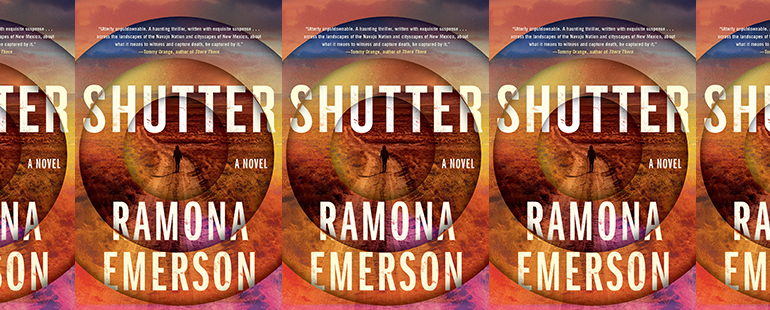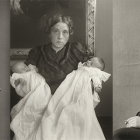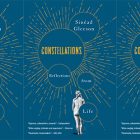Death and Photography in Ramona Emerson’s Shutter

Ramona Emerson’s Shutter opens with a gruesome freeway accident, in which the body of a woman who fell from an overpass is scattered in pieces on the asphalt below. The novel’s protagonist Rita Todacheene is a forensic photographer who has the chilling task of documenting the woman’s remains in more than a thousand photographs. As Rita goes about her work, Emerson walks us through the scene in almost unbearably frank detail. “This person had been scattered—muscles and flesh torn by the push and pull of steel,” she writes. Emerson goes on to enumerate each organ, each body part on the road that Rita must document. The author based these scenes on her own experiences as a forensic photographer, and in a recent interview, she admitted that the novel began as a memoir. Like Rita, Emerson is a member of the Navajo Nation and was haunted by her documents of crime scenes. “I would carry the images that I had in my head with me for months,” Emerson recalled. While photography is closely associated with moments of living, preserving our cherished relationships and events to be remembered far into the future, Emerson upends this perspective and explores the medium’s unsettling underbelly: its connection to death.
Rita’s work unfolds like a journey into a spiritual underworld, where souls shed their ruined bodily vessels and try to desperately cling to life. Shutter, which was released last summer, begins, “Souls don’t scatter like the rest of the body…Souls are grasping for us, for the ones they left behind.” While the police officers at the crime scene hastily conclude that the woman jumped, Rita knows that she was murdered. The ghost of Erma Singleton confronts Rita, demanding that she find out who killed her and avenge her death. Rita is not surprised by the appearance of the apparition. All her life, ghosts have asked her to mediate between her world and theirs. But Erma is particularly persistent, insisting that Rita do whatever is necessary—defying the expectations of the police department and the Navajo culture—to find her killer.
Photography has a long history of association with realms of the spiritual and the deceased. Since the medium’s invention in the mid-nineteenth century, photography served as evidence of the existence of ghosts and a conduit for interaction between the spiritual and material worlds. The process of making a photograph invited comparisons with paranormal activity, as the image on paper or metal seemed to appear from nowhere. Most famously, the American spirit photographer Charles Mumler devised his portraiture business as a kind of seance. The sitter posed in Mumler’s studio and an apparition, often a dearly departed family member, lurked over the sitter’s shoulder in the final print. Such practices operated in a murky area between commercial hoax and tender consolation for the mourning and the bereaved.
The history of photography also contains stories that romanticize the first encounters of Navajo and other Indigenous peoples with photography. In 1902, the photographer Earle R. Forrest described his encounter with Navajo people in Arizona. “The Navajos were very superstitious about having their picture taken,” he wrote. “They called this strange ‘medicine’ the ‘Magic Black Box with the Evil Eye.’” Such records exaggerate the spiritual nature of native peoples as they stare in wonder at the magic of photographic development. White colonialist explorers in the American West often assumed Indigenous people were too primitive, too unmodern to be capable of a more technical understanding of how photography worked.
As a Navajo writer and filmmaker, Emerson provides an alternative to a colonialist conception of photography and examines how the medium fits into the life, community, and beliefs of contemporary Navajo people. Navajo culture harbors strong taboos about death. They believe that lingering with the deceased can cause grave illness. Crying and mourning are to be restrained, as they give spirits a reason to stay in the earthly world. As a child, one of the first photographs Rita ever took was of a dead black cat laying on the road. When her grandmother developed the film, she was frightened of Rita’s attraction to death: “She dumped the photos on her kitchen table and glared at me.” Rita’s grandmother says, “‘Now we have to call the medicine man.’” Mr. Bitsilly arrives at Rita’s grandmother’s house and performs a ritual of song and sweet sagebrush smoke to drive away any spirits that Rita’s photograph might have conjured. But eventually, Rita’s grandmother learns that Rita is still talking to ghosts and begs her to ignore them. Their relationship emphasizes a generational shift. Rita’s grandmother maintains the traditions and beliefs of the Navajo community; Rita tries to negotiate between her Navajo culture and the modern world. She knows that there is no future for her on the reservation where her grandmother lives, yet she feels deeply connected to it.
That connection often surfaces through photography. Rita’s first encounter with the medium was a kind of spirit photograph reminiscent of Mumler’s portraits. Her grandmother makes a camera out of a simple black box and pushes Rita into a beam of sunlight to take her picture. “A bright light came from behind my grandma’s head,” she says. “Standing in the yellow haze, I saw the gray shadow of a man, thin and refined in a white cotton shirt, the sleeves rolled up to his forearms.” In the developed photograph, a glowing white light appears above Rita’s shoulder where the man had appeared just before the picture was taken. The practical explanation is that there was a light leak in the camera. But Rita later realizes that the man who appeared to her, making the light leak on the picture, is her grandfather. Rita’s grandmother supports her burgeoning interest, sharing photographs and cameras, yet remains weary of the seemingly inevitable presence of death within the photographic medium.
There is a lot of death in Shutter, and Emerson creates a powerful tension between Rita’s photographic documentation of dead bodies at crime scenes and the spiritual desperation of their souls. We follow Rita to several crime scenes that cast Albuquerque and its surroundings as a wasteland impoverished by corruption and the abandonment of Indigenous communities. Emerson introduces each new crime scene with a factual subtitle—7:45am., I-40 Westbound at the Interchange: Fatal Accident Involving an Officer—that suggests the detached observations of police reports. But at each scene, Rita is tormented by the photographs she must take of violent crimes and the ghosts who demand her help. As a forensic photographer, Rita pours over the details of the crime and looks closer than police investigators. She knows more than her coworkers, but she is unable to take action. “If I told the department what I could do, they would surely fire me, maybe lock me up in the nearest mental hospital,” she expects. So Rita keeps her visions to herself, but the clinging desperation of Erma takes its toll. “Erma’s fear and dread became my own,” Rita describes, “I began to feel the pressure building in my head.” After photographing another crime scene of the bloody murder of a family in their home, Rita ends up in the hospital, is forced to speak to a therapist, and is eventually suspended from her job.
Chapters alternate between Rita’s growing entanglement with the murder of Erma Singleton and flashbacks to her impoverished upbringing on a Navajo reservation in New Mexico. Rita’s childhood is plagued with abandonment and death. Her grandmother is her only source of love and stability. Rita idolizes her cousin Gloria, who also lives with their grandmother but falls in with a rough crowd. One night, when Rita is six years old, Gloria leaves with her boyfriend, and Rita begs to go with them. Gloria agrees, but then deposits Rita in an abandoned house. Rita spends a terrifying night trapped alone, until her grandmother finds her the next morning and tells her that Gloria died in a car accident. As an adult, Rita drives back to the abandoned house. Within its bare walls, Rita finds the marks she made on the wood when she tried to set herself free. Gloria’s ghost appears to her for a fleeting moment. Rita walks away from the house and sets it on fire with an empty gas can and a cigarette. “I wanted to remember the death of this house for the rest of my life,” she says. “I wanted to see its evil soul lifted into the permanency of eternity. If this curse had to stay with me, I prayed that this purge could bring me some peace.” Rita takes a photograph of the flames before she leaves. “The last memory—finally dead.” Photography, as an accomplice of death rather than life, becomes a way for Rita to exorcize such traumatic memories.
Photography chains Rita to the realm of death, but ultimately it is also her salvation. A set of pictures that Rita takes of a crime in progress leads to the undoing of Erma’s murderer. Rita’s professional reputation and mental health are restored. The ghosts don’t go away, but Rita is able to coexist peacefully with them. She realizes that her visions—photographic and spiritual—are valuable ways to serve others. “Grandma always said to me that you never do things for people to get something in return. That is the white man’s way of living. You do it because they need you,” Emerson writes. “You do it because if you don’t, no one else will.” These words of grandmotherly advice—and the final words of Shutter—might be meant for Rita or the ghosts. Emerson’s novel shows us how the living and the dead seem dependent on one another, with photography poised as a powerful medium of communication between the two worlds.
Photography has consistently served as both an expression of the spiritual and the documentation of truth. Shutter captures this range of photographic purpose. In Rita’s hands, photography serves as a form of forensic evidence, a connection to her Navajo identity, and what draws the dead to her. Her photographic talents, passed down from her Navajo mother and her grandmother, are intertwined with her clairvoyant powers. Even the title of the novel captures photography’s fluidity, at once referring to the blink of a cold, mechanical eye and suggesting the near homonym, shudder, the visceral chill when in the presence of the supernatural.



